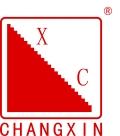Refractory materials for tundish: magnesium tundish coating
The tundish is a container located between the ladle and the crystallizer in the continuous casting process. It is responsible for many tasks such as receiving and storing molten steel, smoothing the flow, purifying the molten steel, and diverting the molten steel into the crystallizer. As the last refractory container before the molten steel solidifies, […]
Refractory materials for tundish: magnesium tundish coating Read More »
